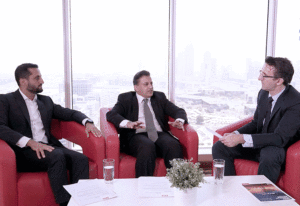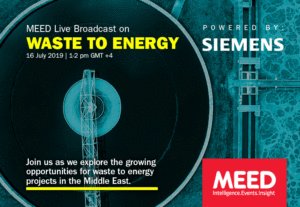
Recycling water will not only cut desalination costs across the region, but also helps the environment
Despite ranking among the most arid regions in the world, water usage among the GCC member states has soared dramatically over the past 30 years, driven by population growth and changing lifestyles.
Per capita water consumption in Kuwait, for example, has risen from about 200 litres a day in the 1980s to more than 500 litres a day – double the daily amount used in the US.
With few freshwater resources available, the majority of water consumed in the region is produced from seawater using costly and highly energy-intensive desalinating processes. But faced with a surge in expatriate arrivals since the turn of the century, the authorities have been forced to improve the management of this precious resource in recent years.
At the same time, the Gulf states are investing heavily to increase their wastewater treatment capacity. According to data from Gulf projects tracker, MEED Projects, some $15bn-worth of wastewater treatment capacity is planned to be built in the GCC by 2015.
Reuse technology
Governments are also investing heavily in programmes to reduce network leakages and public awareness campaigns have been launched to encourage people to use water more sparingly. But the most important change has been the adoption of water reuse technologies.
Whereas previously, most treated sewage effluent (TSE) would have been ejected into the sea, today, it is widely used to irrigate verges and golf courses in place of drinking water.
Most state-run wastewater companies hope to attain 100 per cent TSE reuse within the next few years. Kuwait currently reuses about 70 per cent of its treated wastewater, but plans to achieve total reuse by 2011. Abu Dhabi, meanwhile, expects to achieve the target this year. Saudi Arabia lags behind its neighbours, however, and currently reuses less than 20 per cent of its treated effluent.
The immediate benefits of reusing TSE are two-fold. It is essentially a free resource, and using it to replace potable water saves money, both for the government and the customer, as it cuts out the cost of desalination and lowers the price of the water.
But in the longer term, it also means less investment will be needed in building new desalination plants. Research from MEED Insight estimates that the total desalination capacity in the GCC will need to rise 90 per cent by 2019, to 5.55 billion gallons a day (g/d), from 2.95 billion g/d in 2009, to keep pace with rising demand.
But with irrigation estimated to account for up to 85 per cent of water usage in the Middle East, the amount of drinking water that potentially could be saved by recycling is immense.
Bahrain diverted 200,000 cubic metres a day (cm/d) of TSE for irrigation in 2008, and plans to increase this to 350,000 cm/d by 2015, while Qatar currently reuses about 160,000 cm/d. By comparison, Qatar’s total installed desalination capacity in 2009 was about 216 million gallons a day.
Significant savings
The applications for TSE are not limited to landscaping purposes. In Kuwait, which is home to the world’s largest wastewater treatment and reclamation plant, the TSE is supplied to farms and industries, and is also used to recharge aquifers.
The 425,000 cm/d Sulaibiya facility was the first wastewater project to be developed under a private concession in the region. The plant was commissioned in 2004 and comprises a tertiary wastewater treatment plant and an ultra-filtration and reverse osmosis plant, which treats the effluent to a level safe enough for consumption.
The facility offers significant savings compared with the cost of desalinating water. The cost of producing 1 cubic metre of desalinated water is KD0.62 ($2.27), while treated wastewater produced at Sulaibiya is sold at a cost of KD0.18 ($0.66) a cubic metre, resulting in savings of $1.61 a cubic metre, or $213m a year.
The shift towards water recycling in the GCC has been born out of necessity. It has mostly been motivated by economic reasons, but the benefits to the environment are also significant. The sewage treatment process is less energy-intensive than water desalination and therefore has less of an impact on the environment. According to UK consultant Atkins, the desalination process generates 902kg of carbon dioxide emissions for every 1 million litres of water (kg/ml) produced, compared with 737kg/ml for effluent reuse.
By bringing in the private sector to upgrade existing wastewater facilities and build new treatment plants to cope with additional flows generated by population growth, the authorities in the GCC have been able to access the latest western technologies and expertise. And states are now legislating to ensure water recycling is carried out not just at a municipal level, but also locally.
Dubai has ruled that district cooling firms must use TSE instead of drinking water, and green building codes are also being introduced to encourage the installation of water reuse systems in individual buildings across the Gulf. The practice of grey-water recycling is expected to rise as result. This entails collecting water from showers, bathtubs and wash basins and reusing it in place of drinking water for toilet flushing and irrigation.
Huge potential
The average household generates 586 litres a day of wastewater, according to the Geneva-based World Health Organisation. With toilet flushing accounting for 32 per cent of domestic water consumption, significant volumes of desalinated water could be saved through the installation of grey-water recycling technology, particularly if fitted in the basements of high-rise buildings.
The potential for water reuse in the region is only just beginning to be explored, but already huge savings have been made. It is set to become a massive growth industry in the region as property developers look to adhere to new green building regulations.
But eventually the region will have to tackle the bigger issue and try to bring down per capita water usage to a more sustainable level.
MEED Quality Awards for Projects 2011: Water Reuse Project of the Year
The Water Reuse Project of the Year award is for all water reuse projects covering municipal and local water and wastewater recycling schemes.
Encouraging water reuse and recycling is vital to longterm, sustainable development and treated sewage effluent is now used to replace drinking water in applications, such as irrigation, in most Gulf states.
The criteria
Projects that can be nominated for this award include:
- Rain and surface-water capture systems, including reservoirs
- Water transmission systems, including pipelines
- Effluent collection systems
- Effluent treatment plants
- Treated effluent distribution systems
Those submitting nominations for a water and water the official online entry form to supply information on the five factors in the delivery of the project:
- Economic and social feasibility
- Architecture and design
- Engineering
- Construction procurement and project/programme management
- Environmental impact and sustainable development
Go to meed.com/awards for more information or to meedawards.com to enter the MEED Quality In Projects award for water reuseproject of the year
You might also like...

Hassan Allam and Siemens confirm Hafeet Rail award
24 April 2024

UAE builds its downstream and chemical sectors
24 April 2024

Acwa Power eyes selective asset sales
24 April 2024

Bahrain mall to install solar carport
24 April 2024
A MEED Subscription...
Subscribe or upgrade your current MEED.com package to support your strategic planning with the MENA region’s best source of business information. Proceed to our online shop below to find out more about the features in each package.








